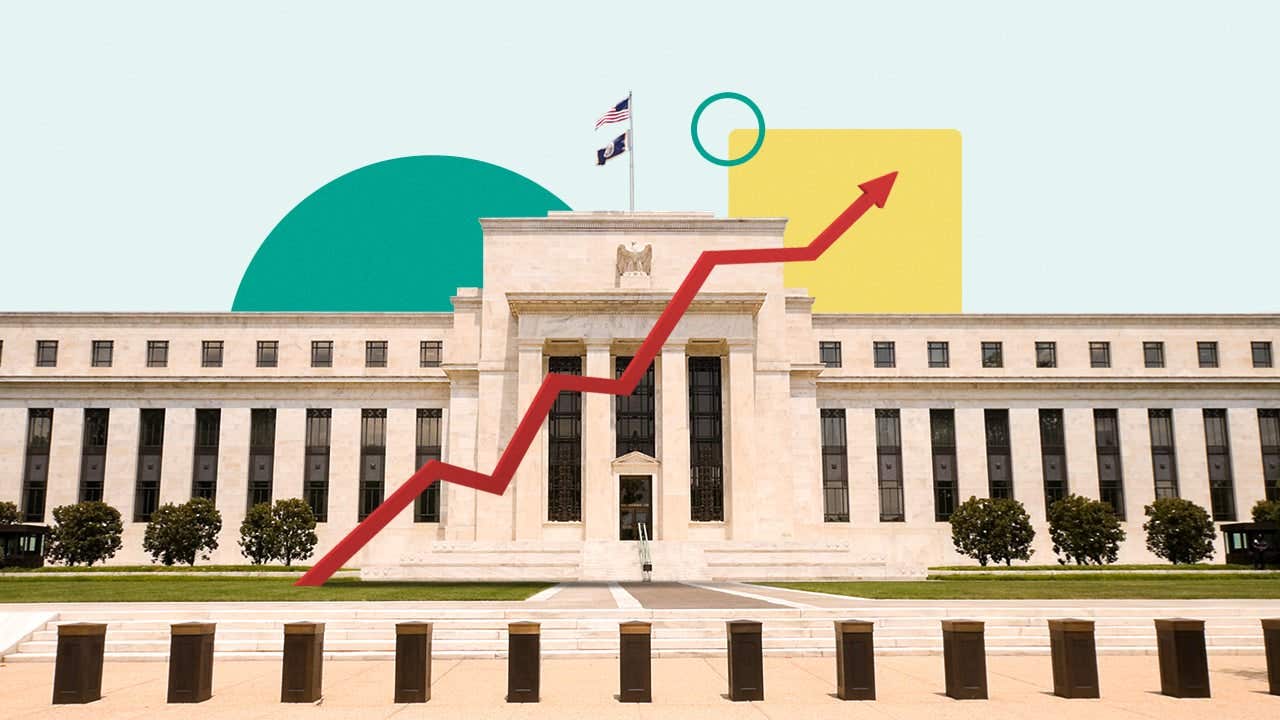What the Fed’s continued rate pause means for homebuyers and sellers

The Bankrate promise
At Bankrate we strive to help you make smarter financial decisions. While we adhere to strict , this post may contain references to products from our partners. Here's an explanation for .
The Federal Reserve is keeping its finger on the pause button. The central bank raised rates 11 times in 2022 and 2023, with the expectation that it would reverse course this year. But as inflation has trended up, the central bank is standing pat. Following the Fed’s May 1 meeting, its third gathering of the year, Chairman Jerome Powell held steady again, announcing no change in interest rates for the time being.
The Federal Reserve and the housing market
Earlier in the inflationary cycle, the Fed had enacted increases of as much as three-quarters of a point. Now that inflation is down to 3.5 percent — still higher than its official target of 2 percent, but not too far off — that round of tightening appears to be over. However, until inflation drops down closer to that target, housing economists wonder when the anticipated rate cuts will begin.
“We expect mortgage rates to drop later this year, but not as far or as fast as we previously had predicted,” says Mike Fratantoni, chief economist at the Mortgage Bankers Association.
In an effort to rein in inflation, the Fed boosted interest rates aggressively in 2022 and 2023, including a single jump of three-quarters of a percentage point. The hikes aimed to cool an economy that was on fire after rebounding from the coronavirus recession of 2020. That dramatic recovery has included a red-hot housing market characterized by record-high home prices and microscopic levels of inventory.
The Fed’s rate hikes have slowed the housing market. Home sales have dropped sharply. But home prices remain near record levels. Because home values are not driven solely by interest rates but by a complicated mix of factors, it’s hard to predict exactly how the Fed’s efforts will affect the housing market.
Higher rates are challenging for both homebuyers, who have to cope with steeper monthly payments, and sellers, who experience less demand and lower offers for their homes. After hitting 8 percent last fall, mortgage rates have dipped back down a bit. As of May 1, the average 30-year rate stood at 7.39 percent, according to Bankrate’s national survey of lenders.
How the Fed affects mortgage rates
The Federal Reserve does not set mortgage rates, and the central bank’s decisions don’t move mortgages as directly as they do other products, such as savings accounts and CD rates. Instead, mortgage rates tend to move in lockstep with 10-year Treasury yields.
Until we start seeing better inflation numbers, the risk in mortgage rates remains to the upside.— Greg McBride, Bankrate Chief Financial Analyst
“Until we start seeing better inflation numbers, the risk in mortgage rates remains to the upside,” says Bankrate chief financial analyst Greg McBride.
Still, the Fed’s policies set the overall tone for mortgage rates. Lenders and investors closely watch the central bank, and the mortgage market’s attempts to interpret the Fed’s actions affect how much you pay for your home loan. The Fed bumped rates seven times in 2022, a year that saw mortgage rates jump from 3.4 percent in January all the way to 7.12 percent in October. In 2023, mortgage rates went higher still, briefly touching 8 percent. “Such increases diminish purchase affordability, making it even harder for lower-income and first-time buyers to purchase a home,” says Clare Losey, an economist with the Austin Board of Realtors in Texas.
What will happen to the housing market if interest rates rise?
There’s no doubt that record-low mortgage rates helped fuel the housing boom of 2020 and 2021. Some think it was the single most important factor in pushing the residential real estate market into overdrive.
When mortgage rates surged higher than they had been in two decades, the housing market slowed dramatically. And, while sales volume remains slow, prices are high. The nationwide median existing-home price for March was $393,500, according to the National Association of Realtors — up nearly 5 percent year-over-year and close to NAR’s all-time-high median price of $413,800.
In the long term, home prices and home sales tend to be resilient to rising mortgage rates, housing economists say. That’s because individual life events that prompt a home purchase — the birth of a child, marriage, a job change — don’t always correspond conveniently with mortgage rate cycles.
History bears this out. In the 1980s, mortgage rates soared as high as 18 percent, yet Americans still bought homes. In the 1990s, rates of 8 percent to 9 percent were common, and Americans continued snapping up homes. During the housing bubble of 2004 to 2007, mortgage rates were high, yet prices soared.
So the current slowdown may be more of an overheated market’s return to normalcy rather than the signal of an incipient housing crash. “The combination of elevated mortgage rates and steep home-price growth over the past few years has greatly reduced affordability,” Fratantoni says.
But if mortgage rates pull back, affordability will become less of a factor. For instance, borrowing $320,000 at the mid-March rate of 6.84 percent translates to a monthly principal-and-interest payment of $2,094, according to Bankrate’s mortgage calculator. Borrowing the same amount at 8 percent translates to a monthly payment of $2,348. That’s a difference of more than $250 per month, or just over $3,000 a year.
A continued decline in mortgage rates could create a new challenge, though: It will likely draw new buyers into the market, a surge that could further intensify the ongoing shortage of homes for sale.
Next steps for borrowers
Here are some pro tips for dealing with elevated mortgage rates:
- Shop around for a mortgage. Savvy shopping can help you find a better-than-average rate. With the refinance boom considerably slowed, lenders are eager for your business. “Conducting an online search can save thousands of dollars by finding lenders offering a lower rate and more competitive fees,” McBride says.
- Be cautious about ARMs. Adjustable-rate mortgages may look tempting, but McBride says borrowers should steer clear. “Don’t fall into the trap of using an adjustable-rate mortgage as a crutch of affordability,” he says. “There is little in the way of up-front savings, an average of just one-half percentage point for the first five years, but the risk of higher rates in future years looms large. New adjustable mortgage products are structured to change every six months rather than every 12 months, which had previously been the norm.”
- Consider a home equity loan or HELOC. While mortgage refinancing is on the wane, many homeowners are turning to home equity lines of credit (HELOCs) to tap into their home equity. The rationale is simple: If you need $50,000 for a kitchen renovation and you have a mortgage for $300,000 at 3 percent, you probably don’t want to take out a new loan at 7 percent. Better to keep the 3 percent rate on the mortgage and take a HELOC — even if it costs 10 percent.
Related Articles

What high-profile commission changes mean for homebuyers and sellers


The rise of all-cash homebuyers, and what it means for the market
